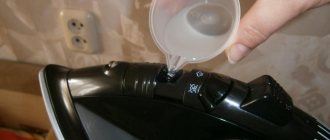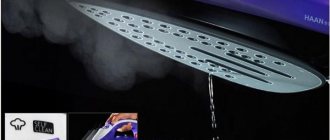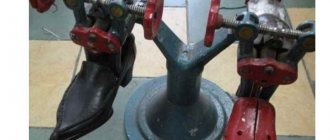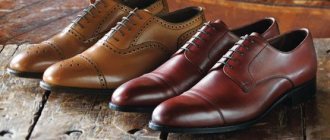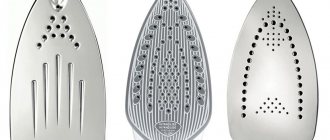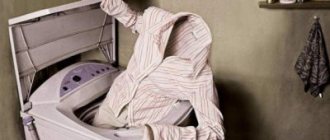To prevent the quality of the laundry from deteriorating, it is recommended to use a functional iron when ironing. But not only sufficient power and the availability of different capabilities play a role when choosing such equipment. The decisive criterion is the type of material from which the base is made. The Steamglide iron sole is popular; what it is and what its features are will be discussed below. Equipment with such a base is produced by Philips.
Features of steamglide
The soleplate of the steamglide iron has become widespread thanks to Philips.
It offers its customers modern surface coating technology. Distinctive features of the innovation are resistance to wear and external damage. Such soles fit perfectly into an already established product line. The most common type of sole covering is alloy steel. This is what helps to maximize service life and wear resistance. The steamglide plus sole is coated with metal-ceramics and glass-ceramics. The material is determined depending on the functional purpose.
Modern coatings
New developments have made it possible to improve ironing work surfaces with the help of various coatings. Thus, the stainless steel base, treated with glass ceramics using Steamglide technology, acquires additional smoothness of sliding, and increased scratch resistance and a variety of shapes allow you to choose a convenient and high-quality iron at an affordable price.
Steamglide outsole
Another innovation is the spraying of Eloxal, an aluminum oxide that increases the wear resistance of the sole.
Eloxal sole
Saphir is a coating made of a metal alloy, which gives the sole resistance to mechanical damage and corrosion, and strength.
Saphir sole
Ceramic metal is used not only for the manufacture of the sole itself, but also as a coating; Durilium is a prime example. It provides softness and smooth gliding and does not leave marks on the fabric.
Durilium outsole
To present the full variety of technologies, it is worth considering several more coating options.
- Simple Pro with non-stick properties allows you to carefully iron the thinnest fabrics, heats up evenly and is easy to clean.
- Ceranium Glissee is a ceramic coating for stainless steel, developed by , which allows us to combine the best qualities of both materials and neutralize their shortcomings. The continuation of the line was Palladium Glissee.
- Ceramic coating is also used in Crystal Ceramic technology, which greatly facilitates ironing due to the increased degree of slip of the sole.
- Oxidized titanium as a treatment for stainless steel is T-ionicGlide, which glides better than its analogues (as manufacturers claim) and is very resistant to damage.
Every major manufacturer of household appliances considers it their duty to develop and release lines of irons with their own “unique” working surface coatings. However, all of them - the non-stick Graphitech, and the above, and even the super-sliding Easy Gliding - practically do not differ from each other in properties; the consumer can only notice the difference in price.
Differences between T ionicGlide and Steamglide
The T-ionicGlide sole is another development of the company. The models have increased technical characteristics by 25%.
The stainless steel base is coated with a durable titanium coating. The main difference is the perforation design. When steam is released, an ionization effect is created; upon release, the cloud is saturated with air particles. This feature not only creates conditions for comfortable ironing, but also allows the air in the room to remain fresh. The procedure is hygienic and rational use of steam is ensured.
What is Steamglide
The soleplate of the Steamglide iron was invented by engineers from the Dutch manufacturer of household appliances Philips. According to the company, the new development has the following advantages over conventional (for example, Teflon or aluminum) soles:
- glides easily on any type of fabric;
- practically does not touch the fabric - ironing occurs due to the constant supply of a large amount of steam;
- Thanks to numerous holes of different shapes for supplying steam, the ironing process becomes simple and effective, without requiring much physical effort.
There is also an update to this technology called Steamglide plus. What is the difference between the two developments? Steamglide plus, in addition to all the advantages of the original version, also has a special fabric tension zone. The steam holes are optimized for faster and easier ironing.
Outsole and cover material
The main material of the Steamglide and Steamglide plus sole is alloy steel. It has high strength and, unlike aluminum, is less susceptible to deformation over time, and also has a more favorable price for the manufacturer.
Steamglide coating can be made of glass-ceramic or metal-ceramic. This material provides the smoothness that an iron needs to glide effortlessly across fabric. In addition, glass and metal ceramics are durable and heat-resistant materials that will not crack over time.
Sole shape
The shape of the Steamglide sole is designed to facilitate movement on fabric.
The sharp and narrow spout is designed for smoothing out small parts. The longitudinal grooves around the holes in the sole are kind of guides that help move the iron in the chosen direction.
Grooves around the steam holes make it easier for the iron to glide across fabric.
When developing Steamglide plus technology, engineers went further and created a sole that is able to move forward almost independently. The user can only hold the iron and direct its movement. This was possible thanks to improved longitudinal groove technology, as well as a change in the direction of steam supply. In Steamglde plus type soles, steam is not supplied straight down, but at an angle, backwards. This pushes the iron forward and makes it easier to slide.
Shape and number of holes on the sole
One of the main secrets of Steamglide is the large number of steam holes. They differ in shape and size. The largest part of the hot air passes through the largest ones. Small holes are designed to supply steam under high pressure. This creates a steam cushion effect that allows the iron to smooth the fabric without touching it.
The holes on the Steamglide sole vary in diameter and shape
Operational life
The service life, as is the case with many household appliances, is not regulated by the manufacturer. However, Philips offers a two-year international warranty on irons with Steamglide soleplates.
According to customer reviews and company assurances, the service life of Steamglide and Steamglide plus is significantly longer than that of models with conventional aluminum or Teflon soles. The surface does not crack or deform over time. This means that the iron remains smooth and glides easily over fabric for several years.
On the boxes of many Steamglide irons, the manufacturer draws attention to the increased service life
Drop-stop technology
A special Philips development called “drip-stop” is a technology that avoids drips when using the iron at low temperatures. It is implemented in almost all devices with Steamglide and Steamglide plus soleplates.
Drip-stop technology is marked on boxes as a crossed out image of an iron with drops flowing out of it
You may have previously encountered this problem when using steam irons. When heating temperatures are set low enough, the water does not convert into steam, but simply flows out of the steam holes. This leaves unsightly marks and drips on clothes. “Drip-stop” is a water supply control system. When the iron cools down, the supply of water to create steam simply stops.
Results
Thus, ironing occurs quickly, efficiently and efficiently. Unlike aluminum or steel, non-stick ceramic coating does not need to be cleaned with a special pencil.
A unique development from Philips is the “drop-stop” technology - this is a kind of water supply control, which is very convenient when ironing fabrics at low temperatures. This function eliminates the appearance of marks, “paths” from the stuck water.
An iron with a steamglide plus soleplate is easy to care for, durable, gentle on fabrics, scratch-resistant, excellent ironing quality, and does not require constant cleaning of the surface.
It is recommended to remove scale that periodically appears from intense steam supply and possible soiling of the sole using specially developed products in the form of descale tablets (it is recommended to do this approximately once a month).
Reviews from buyers of irons with such a surface are mostly positive, however, it should be noted that their price remains quite reasonable.
How to clean the soleplate of your iron
But there are ways to clean your iron at home:
- -Laundry soap. Heat the iron, wipe its sole with laundry soap, then when it cools down, rinse with water.
- -Soda with dishwashing detergent. Mix ½ tsp. detergent with 1 tsp. soda, apply the composition to the sole of the iron (you can use a sponge), leave for 5-10 minutes, then take a damp cloth and rub the surface.
- -A matchbox, or rather a sulfur ignition strip. We heat the iron, move the strip over the dirt on the sole of the iron, then leave it until it cools down and remove the residue with a dry cloth.
- -Toothpaste. Thanks to it, you can remove dirt without scratching the sole. Apply a little paste to the sole, rub it with a soft sponge, and wipe off the remaining product with a damp cloth.
Video
Knowing the main types of ironing surfaces, you can choose the model that will be useful for you:
If you iron only when absolutely necessary and very rarely, then you should not spend money on the latest models and overpay for innovations. In this case, a regular steam iron with a stainless solete will be an excellent option. If you iron on a daily basis, then the equipment for this should not only be of high quality, but also the most convenient, functional and quickly do its job.
Then we recommend turning your attention to models with steamglide or steamglide plus soles. This purchase will not disappoint you.
When buying an iron, pay attention to the sole. She comes into contact with clothes and protects them
Let’s figure out which iron sole is considered the best and will last longer.
If the work surface is of poor quality, other functions become meaningless. The bottom must be durable and resistant to mechanical stress.
A number of basic requirements for the working surface:
- Glides easily. Friction with the fabric should be minimal. Movement through the material does not require effort.
- Caring attitude. Gently smooths out wrinkles on clothes without overheating them or leaving creases or snags.
- Even heating. The working plane should heat up evenly over the entire area, smoothing the material the first time.
- Reliability and safety. The device comes into contact not only with fabric, but also with accessories in the form of buttons, locks and metal parts. The sole must be resistant to damage.
- Easy to care for. Plaque from burnt fibers rarely forms. In this case, clean the dirt quickly.
Coatings that do not damage expensive clothes do a better job of ironing.
General information
Manufacturers offer different types of coating for iron soles. The main requirements for these surfaces are:
- — heating rate of the iron sole,
- — uniform heating over the entire surface area,
- - strength of the iron surface,
- — resistance of the sole to mechanical damage.
Let's look at the main types of soles:
- — made of stainless steel — quite reliable and affordable, designed for a wide consumer when the set of functions is not essential;
- - aluminum - durable, but requiring careful maintenance; they often leave “burnt marks” on them, which are removed with a special pencil (otherwise there is a risk of staining linen or clothes);
- - Teflon - the surface of the Teflon sole is very delicate, does not leave marks on the fabric, but the material itself is fragile, “afraid” of mechanical damage and requires careful handling;
- - ceramic - superior in quality to all others, they are very reliable in operation, resistant to wear, have high thermal conductivity and can easily slide over the material; are the most expensive of all of the above;
- — titanium – high-strength surfaces that ensure easy sliding over the material; have high resistance to mechanical damage, but low thermal conductivity.
How to choose?
Since the modern market is very diverse, the buyer needs advice from specialists who understand the intricacies of these issues
When choosing an iron, you should pay attention to the Dutch company Philips, which occupies a leading position in the market of modern household appliances
In order not to be disappointed in choosing an iron, we recommend that you pay attention to Philips models with a new type of working surface, steamqlide or steamqlide plus. Also a nice feature for housewives will be the fabric tension function, which simplifies the ironing process as much as possible.
Easy sliding, elimination of folds and unevenness of the processed fabrics are facilitated by the so-called “steam cushions”, formed as a result of steam supply through numerous holes of different diameters on the surface of the sole. The holes on the sole are arranged “on a slope”, there are longitudinal grooves around them - this arrangement creates the effect of a “steam cushion”. This shape of the surface ensures uniform heating of the iron, and when steam is supplied, it facilitates its movement in a given direction. Things look like new, and the steam that comes out gently pushes the iron, remains, without making much effort to direct it in the right direction
Also a nice feature for housewives will be the fabric tension function, which simplifies the ironing process as much as possible. Easy sliding, elimination of folds and unevenness of the processed fabrics are facilitated by the so-called “steam cushions”, formed as a result of steam supply through numerous holes of different diameters on the surface of the sole. The holes on the sole are arranged “on a slope”, there are longitudinal grooves around them - this arrangement creates the effect of a “steam cushion”. This shape of the surface ensures uniform heating of the iron, and when steam is supplied, it facilitates its movement in a given direction. Things look like new, and the steam that comes out, gently pushes the iron, remains without making much effort to direct it in the right direction.
Why pay attention to the material of the iron sole?
When considering an ironing machine, the consumer becomes confused as there are many sole options available in the market.
The material of the sole determines how well the iron will glide over the material and how it will iron the item. Sometimes one movement is enough to eliminate wrinkles and unevenness, in other cases - several.
The wider the functionality, the more convenient it is to iron the fabric. However, the larger it is, the higher the price of the product. The sole is part of the basic package and requires a more detailed consideration.
The innovative approach of manufacturers has made it possible to create several main types - steamglide and Eloxal.
Examples of irons with Steamglide soles
Philips has already released many models of irons using its innovative technology. Let's get acquainted with the most popular of them.
Philips GC4541/20 Azur has a Steamglide Plus sole. The model is equipped with a continuous steam function, a drip-stop system, a vertical steamer and a steam boost function. Steam power - 45 g/min
Buyers pay attention to the convenience of this iron. The body is designed in such a way that the device fits very comfortably in the hand.
The cord does not get tangled when ironing. The cost of an iron starts from 5,000 rubles.
Philips GC4541/20 Azur - powerful steam iron with Steamglide plus soleplate
However, there are reviews from customers who are not entirely satisfied with this iron. As a rule, dissatisfaction is associated with the quality of ironing of natural cotton and linen, which, as is known, are generally difficult to iron. Therefore, you should not expect a miracle from this device - in order to perfectly iron cotton items, you still have to work hard.
The model is a more budget version of the Azur line. The Steamglide sole is made of ceramic. The steam supply power is slightly lower than that of models in the Azur line - 40 g/min. The iron has a standard set of functions: a self-cleaning system, constant steam supply, steam boost and drop-stop technology
Consumers pay attention to the short cord as the main disadvantage of the device. There is also a problem common to most steam irons - rapid water consumption
This drawback is understandable - the Stemglide concept itself implies a fairly large consumption of water, which is spent on creating a “steam cushion”. The user will have to replenish the tank regularly to ensure quick and efficient ironing. The cost of an iron starts from 3,500 rubles.
Philips GC3581/30 SmoothCare - budget and affordable steam iron with smooth sole
This iron is economical not only in terms of its own cost, but also in terms of energy consumption. The model, like other Philips steam irons, is equipped with a steam boost function, vertical steaming, and constant steam supply. To extend the service life of the household appliance, it is equipped with a self-cleaning and anti-scale function. Steam supply power - up to 40 g/min. The cost starts from 2,500 rubles.
GC2990/20 PowerLife - economical and inexpensive iron from Philips
Some customers note a significant difference in the quality and efficiency of the iron compared to more expensive models from Philips and other manufacturers. Among the disadvantages of the device listed in the reviews are poor and unreliable assembly of the equipment, weak heating of the sole, and low efficiency.
Philips GC3811/77 Azur Performer is a powerful and lightweight iron. It weighs just over one kilogram and has a steam output of up to 45 g/min. Like other irons in this line, it has all the necessary functions: vertical steam, “drop-stop”, steam boost, constant steam supply, anti-scale protection and a self-cleaning system. The cost of the model starts from 4,000 rubles.
Philips GC3811/77 Azur Performer is an affordable and powerful iron that gets the job done well
Buyers often note the short length of the cord as a disadvantage.
Before purchasing, be sure to measure the cord of your old iron or, if you don’t have one, simply use a measuring tape attached to the socket body to simulate ironing. Mark what length of cord is comfortable for you. If two meters is not enough for you, then you should choose a different iron.
The Steamglide sole is a modern and easy-to-use design. Fortunately, the production of such irons is quite cheap, so Philips offers customers affordable equipment with introduced innovations.
Types of coatings
To determine which iron sole is better, consider the materials from which it is made.
Aluminum
Aluminum coatings were the first to appear after cast iron. They were distinguished by their low price and ease of use.
- smooth plane;
- light weight;
- heats up and cools down quickly;
- it's cheap.
- due to rapid heating, the sole is subject to deformation, shiny areas form on the laundry;
- You can iron clothes with this device only through additional fabric or gauze;
- buttons and zippers leave scratches that cling to the fabric and spoil the material;
- soot appears in the damage and dirt is retained, which leads to poor gliding;
- an incorrectly selected mode can burn clothing.
Given the disadvantages, manufacturers began to coat aluminum with an oxide film. The anodized layer has been heat treated, glides better and does not burn. For example, the Azur Excel plus model. To improve quality, the aluminum plane was coated with ceramics. The weight of the device does not change, and the service life is extended.
Stainless steel combinations
The main advantage of a stainless steel product is durability. Even when heated to the maximum temperature, it is not afraid of deformation.
- durability;
- easy sliding;
- smooth plane;
- not afraid of mechanical damage in the form of fittings;
- not subject to corrosion;
- affordable price;
- smooths out well.
- long heating and cooling times;
- heavy weight.
Devices with a stainless steel base are the best-selling. This is facilitated by the average price and reliability. Given consumer demand, scientists have improved strength through additives.
Nickel and chromium began to be added to the alloy. This improved the appearance and increased the platform's resistance to corrosion. The nickel plated surface has a golden hue, while the chrome gives a bluish color. For example, Inox glissee from Bosch.
The strength of the stainless steel base is given by spraying crystal sapphire powder. Not a precious stone, but a mineral obtained synthetically. The sole treated with it is not afraid of metal rivets and zippers on clothes. The best in strength with this platform is Braun's Saphir.
The stainless steel base is coated with T-ionicGlide titanium oxide, which protects against scratches.
Metal ceramics and ceramics
The advantages of this material were appreciated by companies: Tefal, Siemens, Philips and others. Irons with metal-ceramic soles became popular immediately after they went on sale.
- smooth surface: glides over fabric more easily, providing high-quality ironing;
- it is simply cleared of carbon deposits;
- low cost;
- delicate effect on clothing;
- uniform heating;
- convenience and ease of use.
The disadvantage of ceramic coating is its fragility. The surface may be chipped by a button or metal zipper. Because of this, cracks and peeling appear.
Ceramics are used in combination with metals and their alloys. The ceramic-metal base is suitable for smoothing at high temperatures. It can be found on irons from the following companies: Tefal - Durilium, ultragliss diffusion; Braun - ceramic-jet; Bosch - palladium glissee.
Philips has released Steamglide coating, which is distinguished by its durability. It is made on the basis of glass ceramics. The iron is lighter and glides smoothly.
Teflon base
Teflon does not burn, nothing sticks to it and it is lightweight. But when interacting with metal, scratches may appear.
- does not burn;
- easy sliding;
- ease of care.
- the sole is easy to scratch;
- Do not place it on a metal cooling rack to avoid damaging the base.
Titanium based coatings
Titanium is famous for its strength and durability - it is used in the construction of space rockets.
- strength;
- easy sliding;
- non-stick properties;
- uniform heating;
- reliability and durability.
- heavy weight;
- takes a long time to warm up;
- high price.
The disadvantages are insignificant compared to the high quality of titanium.
Granite glisse enamel
He is not afraid of any damage or blows. Glides easily over clothes, smoothing out all wrinkles. The disadvantage of enamel is its fragility. With active use, strength is lost.
Tefal has released an iron with the autoclean catalys function - the ability to self-clean. Dirt is not deposited and is removed as a result of a chemical reaction.
New development, Simplepro iron surface. Non-stick, suitable for all fabrics.
video review of the iron.
| TOP 5 great irons for home Tips |
| FIND OUT prices ️ Tefal FV1543E0 – Philips GC2998/80 – Philips GC1433/30 … |
| Tags: |
| Video review of the Philips GC4563/30 iron |
| I liked this model so much that I decided to visually show it to everyone who might be interested. |
| Tags: |
| Review of the philips azur GC4556 iron |
| philips #azur #iron #GC4556 #SteamGlide #QuickCalcRelease #philipsrussia #PhilipsAzur #IronPhilips. |
| Tags: |
| How to buy the right iron. Wild difference between expensive and cheap. Let's see! Do you know how to choose the right one... |
| Tags: |
| Iron Philips EasySpeed GC1028/Test and video review |
| Iron Philips EasySpeed GC1028/Video review/Iron test. Bought on Rozetka: ... |
| Tags: |
| Tefal FV9657 - a modern iron with a powerful steam boost - Review from Comfy.ua |
| Tefal FV9657 is the flagship among irons, made in a very cool stylish design. The kit comes with... |
| Tags: |
| Philips iron Review Philips PowerLife GC2998/80 iron |
| Iron Philips PowerLife GC2998/80 #review #ironphilly with #newoutgphillips. |
| Tags: |
| Review of the Tefal Ultimate Pure Micro-calc FV9867E0 iron from the M.Video expert (16+) |
| Read more about the Tefal Ultimate Pure Micro-calc FV9867E0 iron... |
| Tags: |
| Top 5 irons with steam generator 2022. Which iron is better? |
| Rating of irons with a steam generator, the best steam iron of 2019. Prices in your stores Philips GC6822/30 - https://slmr... |
| Tags: |
| Review of Philips Optimal Temp irons vs regular iron |
| Review of Philips GC 2299 and GC 3925 irons, I will tell you about all the characteristics, as well as about the Optimal Temp technology. |
| Tags: |
| Unboxing and review of the PHILIPS Azur Elite GC5036/20 iron. |
| Brief overview of the iron. |
| Tags: |
| Steam Iron Saturn Review |
| steam iron ST-CC0227 Hello, my dear viewers and friends.!!!! Me … |
| Tags: |
| Iron Philips AZUR GC4905 Review |
| Powerful and heavy iron, suitable for dressmakers. Power 3000 W Sole ceramic SteamGlide Elite Tank volume ... |
| Tags: |
| Phillips GC1756/20 iron review - is it worth buying? |
| Review of the Phillips GC1756/20 iron and comparison with the Philips Elance 3100 iron Get money back from online purchases: ... |
| Tags: |
| Rowenta iron. Review |
| In this video I tried to talk about all the disadvantages and advantages of this model. |
| Tags: |
| Philips GC4535/20 iron review |
| See the detailed review and customer reviews at the link: This video will tell you in detail about... |
| Tags: |
| Review of Tefal FV5635E0 and Tefal FV5655E0 irons from the M.Video expert |
| Read more about Tefal Turbo Pro Anti-calc FV5655E0... |
| Tags: |
| IRON SOLE: what are there and which is better Tips (COMFY) |
| FIND out the price of the Philips GC2998 iron ️ CHOOSE an iron ️ ツ SUBSCRIBE to ... |
| Tags: |
| IRONING AND OVERVIEW OF IRON/STEAM GENERATOR |
| Welcome to the channel “Golda-B labusta” ;. “Balabus ta” (“balabo te”) translated from Hebrew means... |
| Tags: |
| Philips GC3925/30 iron review |
Selection by main characteristics
Additional options: control using a touch system, steam generation regulator or movable power cord connection - increase the ease of use of the device. The ease of sliding of the sole depends on the properties of the material from which the working surface is made.
The general requirements that the sole must meet include:
- gentle effect on the processed material;
- minimum friction indicator;
- resistance to damage;
- durability;
- uniform heating and cooling.
It will be much easier to choose the right model if you decide on its purpose, that is, indicate which items the iron will be used for ironing most often.
Form
This parameter determines the ease of use of the device.
- The elongated, pointed shape is suitable for ironing children's and women's clothing, items with many raglans, frills and folds, as well as shirts, blouses, and other items with a complex cut.
- The wide sole with a blunt nose is indispensable when ironing bed linen, curtains and tablecloths.
- The rounded back design will prevent the fabric from curling when the iron moves in the opposite direction.
The thickness of the sole depends on the material from which it is made. A thin fabric, especially if it has a groove around the perimeter, guarantees ease of processing around the buttons, without the risk of the fittings melting.
Steam holes
Almost all models of modern household irons are equipped with a steaming function, the effectiveness of which is influenced, among other things, by the soleplate. The result of steam treatment depends on the shape, number and location of steam outlets on the working surface.
Each manufacturer has their own parameters, but as a standard (as in classic Tefal iron models), larger holes are located at the edges of the sole. Several rows of micro-holes are usually located on the nose and back of the work surface.
Some iron models do not have steam holes on the tip of the sole; such devices do not cope well with wrinkles in areas between buttons and in other hard-to-reach places.
Care instructions
When choosing Steamglide, the soleplate of the iron does not require complex care. In the absence of direct contact, the fabric does not burn. If plaque does appear, you can remove it using a special pencil. To do this you need:
- install the temperature sensor in a position between one and two points;
- disconnect the device from the network;
- install the iron vertically, placing a cotton cloth under it;
- use a pencil to work the area where the fabric is stuck;
- remove traces of the cleaning agent along with the dirt using a soft cotton cloth.
To remove a stuck pencil from the steam holes, you need to iron a piece of fabric with steam or use cotton swabs.
The surface of this type does not deteriorate from mechanical impact, but it is not recommended to resort to abrasive agents.
Traces of scale may periodically form on the work surface. The harder the water used for steam supply, the faster plaque forms. In the absence of cleaning, the quality of the steam supply deteriorates; flakes come out of the holes, leaving a mark on the fabric.
The manufacturer recommends descaling once every 1 or 2 months. Some models have an indicator that flashes when plaque accumulation is critical. The manufacturer recommends using the provided self-cleaning function and gives the following recommendations for descaling:
- turn off the steam supply and set the iron to the maximum temperature;
- fill the water compartment to the maximum;
- connect the device to the network;
- when the indicator goes out, unplug the cord from the outlet;
- bring the sole to the sink in a horizontal position;
- activate the CALC CLEAN function;
- shake the iron, moving back and forth.
When flakes, steam and water stop coming out of the holes, the iron should be heated and ironed with a cotton cloth to clean the surface.
A number of iron models are equipped with a removable container for descaling. The instructions in the manual for use of the device must be followed.
What is this sole?
The sole has many holes of various diameters. With their help, it is possible to create a steam air sole, the effect of which ensures soft gliding.
The manufacturer Philips continues to delight its customers with high-quality equipment for many years. Simplicity and durability of use are the main principles of the manufacturer.
The second, no less popular option is the Eloxal sole. This similar solution for the iron sole is offered by the Brown company. It is distinguished by high strength and resistance to mechanical damage of various types. The aluminum base of the sole will prevent scratches. A special feature is that when used, the material is oxidized by electrolytes. This innovation made it possible to remain in the low price segment, but significantly change the quality offered.
The Eloxal system avoids corrosion due to the strength taken from ceramics and a Teflon base. Ironing things with such irons is easy and relaxed, since aluminum is quite light.
The coating is made from sapphire powder. With it it is possible to achieve maximum smoothness and raise strength characteristics to a new level.
Also, this solution is similar in cost to its analogues. The manufacturer created a unique engineering solution for the profile, making it unique, and maintaining a low cost relative to similar devices.
Which sole material is better?
The most common solutions are presented below:
- aluminum. A classic version of the material that has proven its strength over many years of use;
- stainless steel Stainless steel is used in most irons. The most suitable variety for those who do not require incredible quality;
- Teflon. Narrowly distributed. Reduces the likelihood of sticking to the surface of the laundry and does not have a harsh effect that can damage the fibers;
- ceramics. Irons with such soles are very high quality. They slide over the surface with ease due to the smoothness of the surface;
- titanium. It is absolutely resistant to mechanical damage. It has no disadvantages other than high cost.
These characteristics will allow you to choose the type of iron that will make its use long and enjoyable. It is simply impossible for the average consumer to understand the abundance of equipment models. To choose the right device, you need to at least know which indicator to rely on when choosing.
Material
The quality, convenience and efficiency of ironing depends on the material from which the sole is made.
Manufacturers use to make soles:
- ceramics and metal ceramics;
- stainless steel;
- aluminum;
- titanium.
Each of the listed materials has its own characteristics, which are worth considering in more detail.
Ceramic or metal-ceramic sole
This is a fairly common, although not the most popular, type of work surface. Ironing efficiency is consistently high and is not affected by the stiffness of the fabric or the degree of wrinkles. Soles made from these materials are suitable for processing both thick towels and the finest tulle or blouses.
The indisputable advantages of ceramics include:
- easy glide on all types of fabrics;
- durability;
- delicacy of impact;
- ease of cleaning.
However, it also has disadvantages that cannot be ignored:
- fragility - unstable to impacts, scratches easily appear on it, leading to delamination of the coating;
- exposure to aggressive chemical environments (it does not tolerate contact with alkaline compounds especially well, and this should be taken into account when cleaning);
- high price.
All leading manufacturers produce irons with ceramic or cermet soles.
Stainless steel
According to statistics, when choosing between ceramics or stainless steel, the modern buyer prefers the second option. Stainless steel work surface:
The main disadvantage of stainless steel is its heavy weight, as well as its long heating time. However, for consumers, the advantages outweigh this disadvantage, which makes models with soles made of this material very popular. In addition, most manufacturers use various coatings that increase the performance characteristics of stainless steel work surfaces.
Aluminum work surface
The aluminum sole instantly warms up to the set temperature when turned on and quickly cools down after disconnecting the device from the network.
The advantages of aluminum bases are:
- high thermal conductivity;
- small weight;
- affordable price;
- anti-corrosion properties.
It is worth remembering that aluminum is a rather soft metal, which may leave scratches and traces of deformation upon contact with hard objects.
Titanium sole
Due to the high strength of the material, the sole is not at risk of damage when in contact with clothing accessories or from accidental impacts. The working surface made of titanium glides well and is durable, but due to the low thermal conductivity of the metal, the heating and cooling time increases significantly.
Despite a lot of advantages, irons with a titanium base are not in particular demand among buyers, which is explained by the presence of a significant drawback of such devices - a rather high cost.
